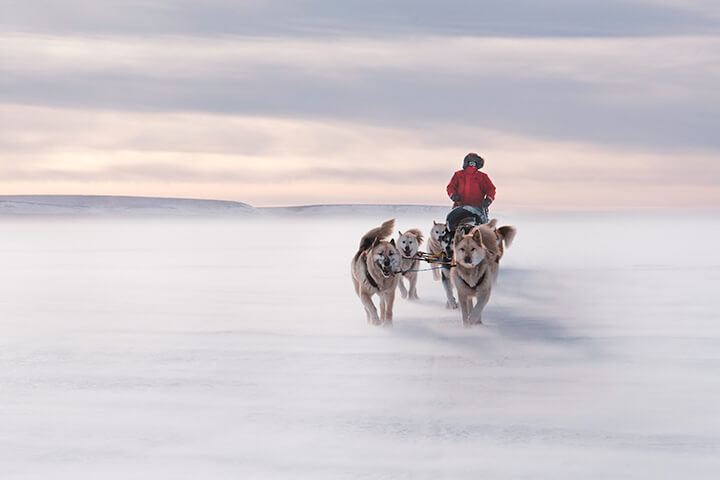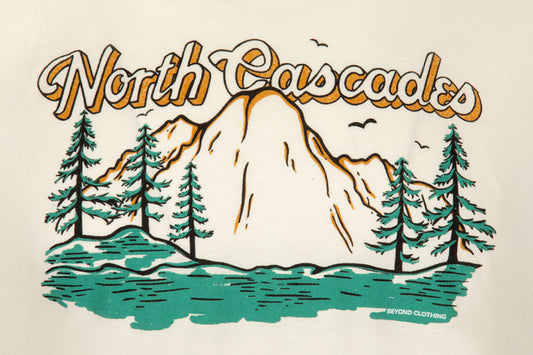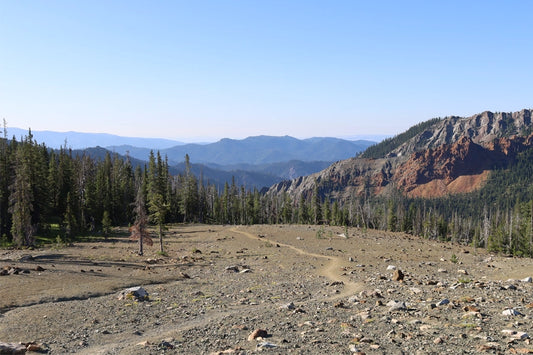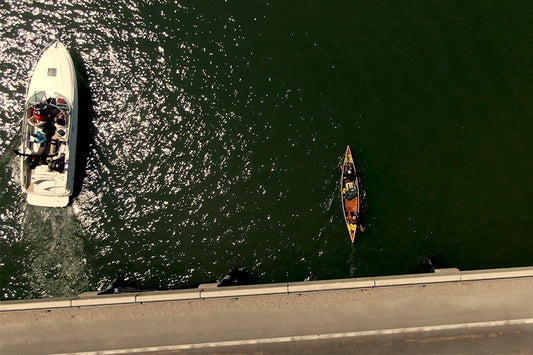A 2020 Adventure Experience
In 2020, filmmaker, photographer, dog musher, former national park ranger, and Nat Geo contributor Jayme Dittmar set out to retrace the famous 5th Thule Expedition of 1921 and examine the cultural, climatological, and zoological changes that had transpired since. What began as an adventure adapted into a more deeply connected experience with the lives of Alaskan Natives.

Almost 100 years ago, famed Greenlandic–Danish polar explorer and anthropologist Knud Rasmussen set off from Danske Øen (translated: Danish Island) in Hudson Bay to run dogs and sleds across Arctic North America to the Bering Strait. This incredible expedition provided a profound, exciting, and yet easily accessible description of nature and Inuit culture at that time. Our Thule Expedition 2020 was intended to follow the track of the original, traveling by dog team some five-thousand miles around half the circumpolar north along the coast of the Arctic Ocean in Russia, United States and Canada. Climate change in the Arctic will drastically change the wild character and livelihood of the arctic people in the near future; thus, we are once again on the threshold of significant and very concrete social, economic, and cultural changes, just as when Knud Rasmussen completed the original 5th Thule expedition.

Our objective was actually to mush this distance over two years in reverse, starting in Nome, Ak. When our sled runners reached the sea ice on February 12th, I was elated. This was my first coastal trip by dog team. I was accustomed to traveling for months at a time in the mountains or across the country, but the ocean would bring a new set of challenges. Looking past the dogs to an endless horizon I felt myself leaning into my comfortable place: the unknown. The first three days we faced ground blizzards, as well as open water; our learning curve was steep. If the wind changed direction in the night, we would need to wake up and relocate our gear to the proper direction so it wouldn’t collapse. Our Beyond Systems were absolutely essential to our survival, but also overall enjoyment of thriving in difficult conditions. The only time I took off my Allta Parka, fur-ruffed hood, and goggles in the first five days of our journey was to sleep in the evening. Also our layering system kept the moisture off of our bodies so we didn’t freeze while breaking trail. We felt impenetrable from the Arctic conditions.


We managed to travel a fraction of the intended distance (about two weeks) before the state of Alaska issued a stay-in-place mandate that didn’t allow anyone to travel. Nobody was allowed in, and leaving would also prove to be difficult. On top of this, many of the villages along the coast of Alaska had lost over half of their populations in the last global pandemic, the Spanish Flu of 1918. Everyone was absolutely cautious. It took me about a week to internalize that I would not be continuing the expedition. We would miss the majority of the villages, sea ice, and adventure that was ahead and that I had been planning for almost the entire year before. So much of my identity as an “arctic explorer” is based on my own perception of my capability to cover the miles. But who was I to define progress in a world that is fractured, out of balance, and now demands that we slow down?


The difference between “stuck” and “liberated” was finite, and the desire for meaning was heavy; I needed to change my perspective. There was no better place to do so than with the people who were practiced in this, in the village of Shishmaref, Alaska. It was a place where the storms were so severe they buried houses overnight, and daily life took patience, insight, and humor. The dog mushing legacy was strong here, and we were immediately brought into village life. We were warmly welcomed into the legendary dog musher home of the Nayokpuks’. We spent the days hunting muskox and caribou, collecting fresh water, drinking ice from glacial lakes, listening to stories, giving sled dog rides to the kids, and eating some of the best food on the planet harvested from the land and sea.


We eventually decided that the trip would not continue and that coronavirus wasn’t something that was just going to blow over. Our best bet on getting a plane back to the road system with the dogs was Nome. Our hosts helped me fix a loose part on my dog sled and sewed wolverine fur on my wind anorak; parting gifts to help sustain us on the journey. On the day it came to leave, I was distraught. I hugged my new family tightly in tears, saying that I didn’t want to go. Of course they said I should just stay through the summer. I told them I would be back when all of this was over.
We decided on a different route back, traveling further inland to avoid the villages we passed through on the way. The return journey took about ten days. Even though the weather was extraordinary, every mile felt long, extended, as if traveling into the wind with a heading in the wrong direction.







0 Comments